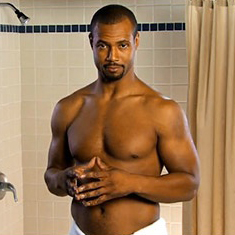Catching Content: Top 10 Attributes of Viral Marketing Campaigns
 What do the Old Spice Man, the Evian babies and the Chipotle Scarecrow all have in common? We’ve all seen them. And here’s why:
What do the Old Spice Man, the Evian babies and the Chipotle Scarecrow all have in common? We’ve all seen them. And here’s why:
1. The content is unique and memorable.
If you want people to share your content, make it share-worthy. Whether it’s an animated short film or a perfectly timed newsjacking ad, your content needs to stand out if you want others to share it. Don’t think your product lends itself to unique, memorable content? Get creative! Even blenders can become viral sensations:
2. The campaigns take a risk.
Marketing campaigns that go viral are often a result of thinking outside the box. In an attention-grabbing twist to traditional social media marketing, the Grey Poupon mustard brand set out to create “the most discerning page on Facebook.” Facebook users applied for membership, and the company used an algorithm to search the applicants’ profiles, checking for grammar usage, musical taste, restaurant check-ins, scandalous photos and more to determine whether the applicant was sophisticated enough to join the company’s Facebook page. Only the top applicants were granted membership, and more than 35,000 were denied (with a request to “refine” their profile and reapply). The result of the campaign? More than 100 million impressions and a 3000% increase in fan base.
3. The content appeals to emotion.
The Budweiser Clydesdales commercials make us teary, the Dove “Real Beauty Sketches” make us joyful and the GEICO Hump Day Camel makes us laugh. Research shows that viral content appeals to our emotions, particularly positive emotions like amusement, joy, hope, surprise, nostalgia, affection and excitement. Content that surprises is particularly successful, especially among millennials who are constantly bombarded with digital content and are harder to impress.
4. The content is developed with the target audience in mind.
Who is your target audience? What do they like and dislike? What are they already saying about your product? Find out and use that information to develop content they’ll want to share. The Dollar Shave Club advertisement did just that, targeting young men who value affordability, simplicity and profanity-laden humor. Would my mom approve? No. Would my bearded boyfriend like it? Definitely.
5. Presentation is not an afterthought.
It’s not just what you say, it’s how you say it. Are you creating content for Facebook or YouTube? Are you targeting middle-aged professionals or millennials, who prefer more engaging formats like videos and infographics? Viral content typically has an enticing title, dynamic visuals, a call to action and social sharing buttons. Also, according to former Gawker superstar Neetzan Zimmerman, content is shared most often when it is posted at 9 a.m. or noon EST. At 9 a.m., East Coast workers are just getting to the office and don’t want to dive into work immediately; at noon, West Coast workers are doing the same, while the East Coast breaks for lunch.
6. The content provides a good user experience.
If your content loads too slowly, is covered in pop-ups or is difficult to navigate, I will not share it. End of story. Also, viral content should be easily accessible from any device. According to a ShareThis study, viewers are twice as likely to share content on a mobile device than on a desktop. This is partially due to what BuzzFeed calls the “bored in line” audience—viewers who are browsing the Internet on mobile while waiting in line.
7. Campaigns take advantage of consumer-generated content.
GoPro and Coca-Cola are two companies that know how to take advantage of consumer-generated viral content to create even larger marketing campaigns. In 2013, firefighter Cory Kalanick used a GoPro camera to record a video of himself saving a kitten from a fire. GoPro re-posted the video with its logo and quickly racked up millions of views. Similarly, Coca-Cola took advantage of the viral Coke Zero and Mentos rocket car experiment video. Although the brand was initially not thrilled about the publicity—they wanted consumers to drink Coke rather than experiment with it—they eventually embraced the success of the video and offered a deal to the creators.
8. The content involves the viewers.
Whether it’s via a mobile app or a potato chip contest, content that enables viewers to participate tends to be shared more often. The Chipotle Scarecrow campaign and the Evian baby&me campaign both have accompanying mobile apps, while Lay’s achieved tasty success with its “Do Us a Flavor” contest, which invited consumers to submit new potato chip flavors for the chance to win $1 million or 1% of the winning flavor’s net sales. The results? One million votes, a tripled Facebook fan base and a 12% increase in sales. Oh, and delicious Cheesy Garlic Bread potato chips.
9. The content generates additional content.
Some of the most successful viral content generates additional content, which enables the campaign to grow exponentially. If you dumped a bucket of ice water on your head in the past few months, this might sound familiar. Other examples include Elf Yourself, Mad Men Yourself—which resulted in record ratings for the AMC drama—and the Old Spice Man Response Campaign. Isaiah Mustafa, the “Man Your Man Could Smell Like” from the wildly popular Old Spice commercials, uploaded more than 180 YouTube videos of himself responding to questions and comments posted on social media. All posted in less than three days, the videos garnered more than 65 million views, making the campaign one of the fastest-growing and most popular of its kind in history.
10. The campaigns have a purpose.
Successful viral marketing campaigns should have—and achieve—a set objective, whether it’s increasing brand visibility, establishing the company as an industry leader, generating customer interaction or simply selling a product. But remember, viewers won’t share content unless it speaks to them in some way. Find your voice, and you might soon be giving Grumpy Cat a run for her money.
What do you think defines viral content? What are some of your favorites? Share in the comments section!
Laurel Reese – Project Manager



